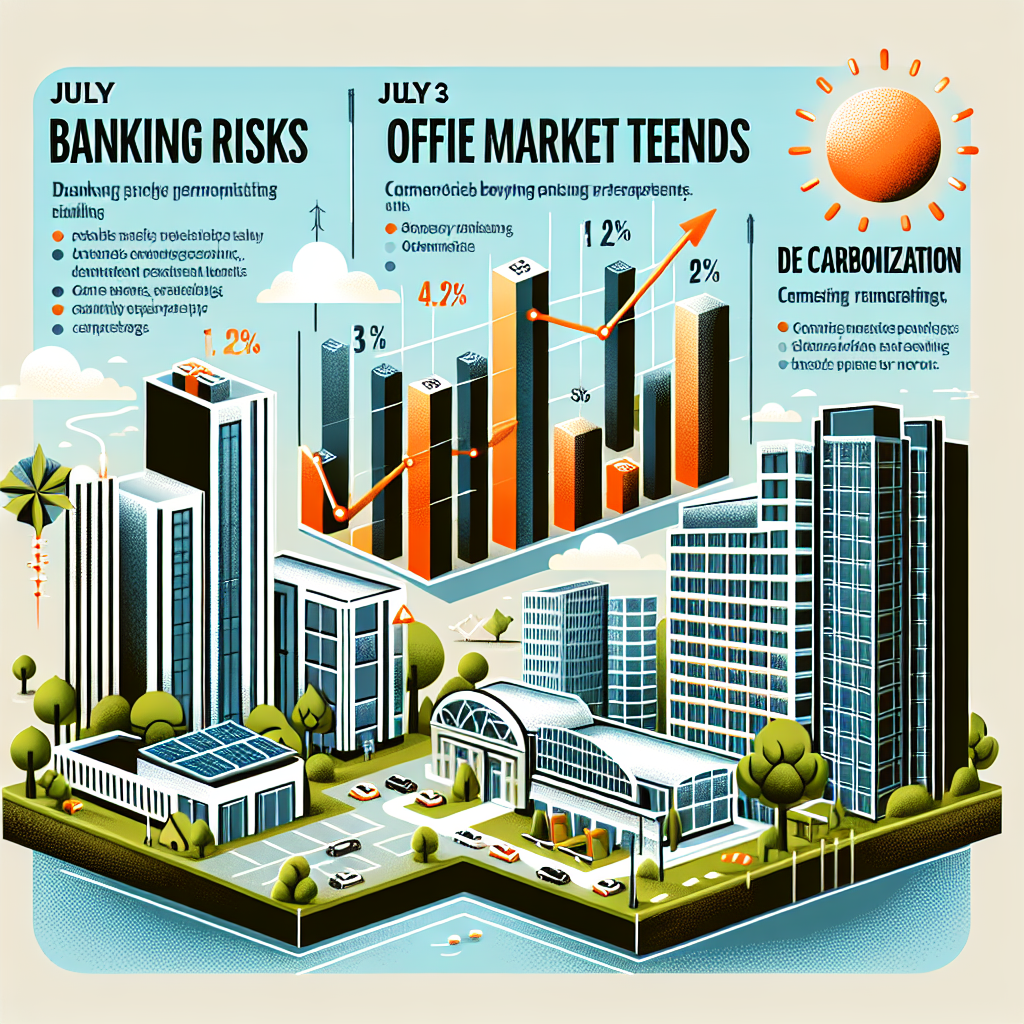July Insights on Commercial Real Estate: Banking Risks, Office Market Trends, and Decarbonization Updates
The commercial real estate (CRE) sector is a dynamic landscape that continuously evolves in response to economic, environmental, and technological changes. As of July 2023, several key trends are shaping the industry, including banking risks, office market trends, and decarbonization efforts. This article delves into these areas, providing a comprehensive overview of the current state of commercial real estate.
Banking Risks in Commercial Real Estate
Banking risks have become a significant concern for the commercial real estate sector, particularly in the wake of recent economic uncertainties. The interplay between interest rates, loan defaults, and regulatory changes has created a complex environment for both lenders and borrowers.
- Interest Rate Volatility: The Federal Reserve’s monetary policy has led to fluctuating interest rates, impacting the cost of borrowing for real estate developers and investors. Higher rates can lead to increased loan defaults, especially for properties with variable-rate mortgages.
- Loan Default Risks: According to a report by Moody’s Analytics, the default rate for commercial real estate loans is projected to rise to 5% by the end of 2023, up from 3.5% in 2022. This increase is attributed to economic slowdowns and reduced cash flows from tenants.
- Regulatory Changes: New regulations aimed at increasing transparency and reducing systemic risks in the banking sector are also affecting CRE financing. Lenders are now required to hold more capital against potential losses, which could tighten credit availability.
Office Market Trends
The office market is undergoing a transformation as companies adapt to new work models and employee expectations. The shift towards hybrid work arrangements has led to changes in office space demand and design.
- Hybrid Work Models: A survey by CBRE found that 70% of companies are adopting hybrid work models, reducing their overall office space requirements. This trend is leading to an increase in sublease space availability, particularly in major urban centers.
- Flexible Workspaces: The demand for flexible office spaces, such as coworking environments, is on the rise. Companies are seeking spaces that can be easily reconfigured to accommodate fluctuating workforce sizes.
- Location Preferences: There is a noticeable shift towards suburban office locations as employees seek shorter commutes and a better work-life balance. This trend is driving up demand for office spaces in suburban markets.
Decarbonization Updates
Decarbonization is becoming a critical focus for the commercial real estate industry as stakeholders recognize the importance of sustainability in building operations. Efforts to reduce carbon footprints are being driven by both regulatory pressures and market demand.
- Regulatory Pressures: Governments worldwide are implementing stricter building codes and emissions standards. For instance, New York City’s Local Law 97 mandates significant reductions in carbon emissions for large buildings by 2030.
- Market Demand: Tenants and investors are increasingly prioritizing sustainability. A study by JLL revealed that 60% of tenants are willing to pay a premium for green-certified buildings.
- Technological Innovations: Advances in building technologies, such as smart energy management systems and renewable energy integration, are facilitating decarbonization efforts. These technologies help reduce energy consumption and improve building efficiency.
Conclusion
In summary, the commercial real estate sector is navigating a complex landscape marked by banking risks, evolving office market trends, and a strong push towards decarbonization. Stakeholders must remain agile and informed to successfully navigate these challenges and capitalize on emerging opportunities. As the industry continues to adapt to these changes, the focus on sustainability and innovation will likely play a pivotal role in shaping the future of commercial real estate.



